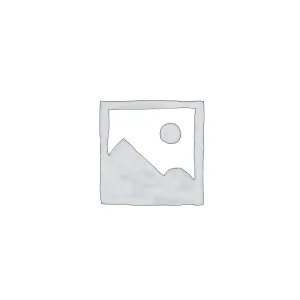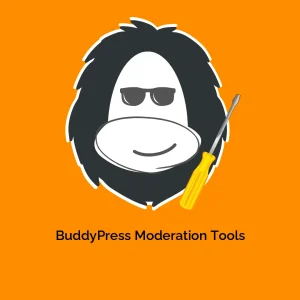Integrating Typekit Fonts into Your Project
When it comes to choosing fonts for your design projects, the options can be vast and overwhelming. One popular choice for designers has been Typekit, which has transformed into what we now know as Adobe Fonts. This transition marks a significant evolution in how web typography is approached, offering a seamless integration of fonts into various platforms. Although the original Typekit service has been phased out, it is essential to understand its legacy and the new functionalities that Adobe Fonts now provides.
The Transition from Typekit to Adobe Fonts
Typekit emerged as a go-to solution for web designers seeking high-quality fonts for their websites. Its key feature was the ability to use a variety of typefaces on web pages without the need to host fonts locally. This was a game-changer, resolving compatibility issues across different browsers and devices. However, as Adobe acquired Typekit, the service evolved into Adobe Fonts, expanding its offerings and enhancing usability.
With Adobe Fonts, users now have access to a broader and more diverse library of fonts. This change has streamlined the process of font selection and integration for designers. With built-in Adobe tools, designers benefit from a cohesive ecosystem that enhances workflow efficiency.
How to Use Adobe Fonts
One of the standout functionalities of Adobe Fonts is its seamless integration through tools like the Font Manager, which is especially beneficial for those who previously relied on Typekit. Here’s how you can get started with integrating Adobe Fonts into your design:
Step 1: Create an Adobe Account
To access Adobe Fonts, you first need to have an Adobe account. This should be straightforward if you are already using other Adobe products; simply log in. If not, creating an account is free and allows you to explore various Adobe services alongside Adobe Fonts.
Step 2: Explore Available Fonts
Once you are logged in, you can browse the extensive library of fonts available through Adobe Fonts. The new interface offered in Adobe Fonts makes it easy to filter fonts based on categories such as serif, sans-serif, slab, display, and more. You can preview how fonts look with your custom text, which can be incredibly useful in making a selection that best fits your project’s needs.
Step 3: Activate Fonts
After selecting your preferred font(s), you need to activate them for use. This will involve clicking on the “Activate Fonts” button next to the selected styles. Activation is instantaneous, and these fonts become available for use across Adobe Creative Cloud applications and compatible design software.
Step 4: Integration into Your Website
With Adobe Fonts activated, integrating them into your website is both simple and efficient. For web projects, Adobe will provide you with an embed code or link that you can include in the head section of your HTML document. This code ensures that your chosen fonts are loaded whenever your webpage is accessed, providing a consistent experience for any visitor.
You can also integrate fonts programmatically if you are using a content management system (CMS) or specific web development frameworks. Most platforms offer plugins or built-in support for Adobe Fonts integration, ensuring that you can easily implement your selected typography into your site seamlessly.
Step 5: Leverage Font Variants
One of the benefits of the Adobe Fonts service is the variety of font weights and styles available. When you select a typeface, you often have access to various weights (light, regular, bold, etc.) and styles (italic, upright, etc.). This means you can maintain a visually engaging hierarchy in your designs without compromising on quality or character.
For instance, you might opt for a bold version of a font for headings to capture attention, while using a lighter version for body text to enhance readability.
Step 6: Testing and Optimization
Once you have integrated your typeface into your project, it’s essential to carry out thorough testing across different devices and browsers. This ensures that the fonts render correctly and perform well, ultimately providing a pleasant user experience. Monitoring performance can also help you optimize load times and site speed, which are crucial factors for SEO.
The Benefits of Using Adobe Fonts Over Local Hosting
Accessibility and Variety
Adobe Fonts gives designers access to thousands of typefaces without the hassle of having to host those fonts themselves. This not only frees up space on your server but also enhances website performance since users experience quicker load times when fonts are loaded from a content delivery network (CDN) like Adobe’s.
Licensing Made Easy
When utilizing Adobe Fonts, licensing concerns are significantly eased. With a Typekit subscription, users had to manage font licenses, varied across font foundries. However, Adobe Fonts handles the licensing, allowing users to employ the fonts in personal projects, commercial ventures, and everything in between without worrying about potential legal implications. Just ensure you abide by the terms provided by Adobe.
Constant Updates and New Fonts
With Adobe Fonts, you’re not stuck with the same limited selection. Adobe frequently adds new typefaces to its library, meaning you have a fresh selection at your disposal whenever you need a new look. This is particularly beneficial for designers working on multiple projects, as each project might require different tone and style.
Typography Collaboration with Creative Cloud
Being a part of the Adobe family means that your Adobe Fonts are readily accessible across numerous Adobe applications such as Photoshop, Illustrator, and InDesign. This integration allows designers to use the same fonts in both web and print media without the need to adapt or change styles.
Best Practices for Using Typekit/Adobe Fonts
While integrating Adobe Fonts has its advantages, there are best practices you should follow to maximize usability and aesthetics on your website.
Keep Your Font Selection Minimal
While it might be tempting to use a wide variety of fonts, it’s crucial to limit your selections to two to three distinct typefaces. This reduces visual clutter and enhances your site’s readability. Stick to one font for headings, another for body text, and optionally one for accents or calls-to-action.
Ensure Readability
Always prioritize readability over style. This can mean selecting contrasting colors for your background and text to ensure that your copy is legible. Pay attention to font sizes, line spacing, and structure to maintain an easy reading experience.
Optimize for Performance
Fonts can affect your site’s speed, particularly if you are using numerous font weights and styles. Limit the variations you use on a page to what is necessary and consider loading fonts asynchronously to improve performance.
Test Across Devices
Make sure you preview how fonts appear not only on desktops but on tablets and mobile devices too. Users access websites from various devices, and ensuring a consistent experience will contribute positively to user engagement.
Conclusion
In summary, while Typekit may have been replaced by the more robust Adobe Fonts service, its legacy continues to influence how designers approach font integration. Embracing the usability and vast selection that Adobe Fonts offers lays a strong foundation for anyone looking to elevate their design projects. With efficient activation, simple integration, and ongoing updates, Adobe Fonts ensures that designers can enjoy an intuitive typography experience. By following best practices and leveraging the tools available, you can maximize the impact of your chosen typefaces and create aesthetically pleasing and user-friendly web designs.
Download Typekit Plugins for free
Yes indeed, downloading Typekit for Free on OrangoGPL is feasible and completely law-abiding.
Truly, even downloading a cracked Typekit is law-abiding, because the license it is distributed under is the General Public License, and this license allows the user its distribution for free.
Therefore, there’s no reason to be concerned: If you are looking to buy Typekit cheaply or, directly, to download Typekit Plugins nulled and, so, have it one hundred percent free, on OrangoGPL, it’s possible without going outside the law.
Download Typekit GPL: The way for entrepreneurs just starting
It doesn’t matter how you name it: Typekit Plugins offers, download Typekit Plugins GPL, download Typekit without license or download Typekit Plugins cracked.
It is one hundred percent within the law and something necessary for every new entrepreneur.





Reviews
There are no reviews yet.